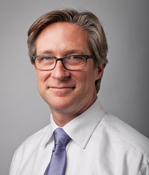Global Health 536: Religion and Health in Context: HIV
Course Description: This course will explore the ways in which religion has been from the beginning of the epidemic to make sense of the HIV epidemic and to mobilize or hinder productive responses. These processes of making meaning and responding have occurred in a variety of contexts; the course will critically explore a broad spectrum of religious, political, and public health contexts to demonstrate the ways in which religion has been invoked in response to questions and practices of health and wellness in general and to HIV in particular.
The readings for the course are designed to introduce the class topic and students are expected to complete assigned readings prior to class. In many instances, class time will include lecture and discussion of readings but at other times, the class sessions will function to develop ideas introduced in the readings more fully. In other words, students should not expect the class sessions merely to fully summarize assigned readings. Written assignments are designed to test not only students’ knowledge of the material but also their ability to integrate that knowledge with critical reflection on both theory and practice.
Learning Objectives for this Course: By the completion of this course, students should be able to:
- Critically assess the function of religion as a factor in cultural understandings of HIV;
- Describe the implications of religious rhetoric on the political, public policy, and public health responses to the HIV pandemic;
- Develop their own informed critical perspective in regard to a specific religious tradition and HIV and be able to articulate that perspective with clarity; and
- Eithera) Create a resource to productively address some dimension of the HIV pandemic utilizing religious perspectives and/or practices orb) Develop a broad outline for an evidence-based community-level HIV prevention initiative that specifically engages religious communities.
Global Health 575: Religion, Health, and Development
Course Description: This course will provide participants with an introduction to the intersection of religion, public health, and development practice. The specific context for examining that intersection is the east African country of Kenya, a country whose cultural, political, and religious dynamics provide an ideal setting for such examination.
Learning objectives or competencies for this course: By the end of this course, students should be able to:
- Name and describe key historical events in colonial and post-colonial Kenya.
- Describe the relevance of those events to public health and development.
- Describe the role that religion plays in contemporary Kenyan culture.
Global Health 576: Assessing Religion’s Role in Public Health and Development Initiatives in Kenya
Pre-requisites: This course is the second in a two-course sequence. Students must have been enrolled in the first course, “Religion, Health, and Development,” (held each spring semester) in order to participate in this course. The bulk of this course over the summer break in Kenya, with classroom seminars held at St. Paul’s University and eight weeks of field work taking place in a Kenyan non-governmental organization. Students will meet at Emory in the fall semester semester for final, integrative work related to their summer experiences in Kenya.
Course Description: This course will provide students with a thorough introduction to the intersection of religion, public health, and development practice. The course will combine readings on these topics from inter-disciplinary perspectives with case studies, group work, field placement experiences, and student presentations.
Learning objectives or competencies of the course: By the end of this course, students should be able to:
- Identify the intersections among religion, health, and development in both theory and practice.
- Assess religion’s function in relation to public health and development initiatives. When is it an asset? When is it in tension?
- Assess the organizational strengths and weaknesses of a local NGO/CBO/FBO.
- Develop or refine their own theoretical perspectives in light of field placement practice
Global Health 593/Sociology of Religion 593: Religion and Health in Context: Sexual and Reproductive Health
Course Description: This course will offer a sustained critical analysis of the complicated relationship between religiona dn sexuality, particularly in relation to issues of central concern to sexual and reproductive health. In the course, students will examine the teachings of major world religions (with a primary focus on Christianity and Islam) on sexuality from global perspectives, place those teachings in historical contexts, critically assess the impact of those teachings in the context of sexual and reproductive health initiatives in both national and international contexts, and work to align religion and sexual and reproductive health initiatives through group projects and case studies.
Learning Objectives: By the end of this course, students should be able to:
- Describe key points of intersection and tension between religious beliefs, teachings, and systems, and sexual and reproductive health research, policy, and practice.
- Critically analyze the underlying causes of tension between religion and sexual and reproductive health.
- Describe three examples of religion’s influence in regard to public health research or practice in the areas of sexual health, reproductive health, or HIV/STI prevention.
- Describe theoretical and programmatic approaches drawn from interdisciplinary perspectives that offer alternatives to the common points of tension between religion and reproductive and sexual health.
 GH 507/ES 654/NRSG 686 Health as Social Justice
GH 507/ES 654/NRSG 686 Health as Social Justice
Emory University, Rollins School of Public Health
This course examines the multiplicity of social justice factors that affect health as well as community systems and social change approaches that may favorably alter them. The course is designed to include students from Schools of Public Health, Theology, Nursing and Law in order to frame issues as interdisciplinary concerns. The class meets once per week for two class hours.
The course was originally offered in 1996 at the request of students in public health, nursing and theology after going through a period of development involving faculty and students in all three disciplines, as well as staff from the Interfaith Health Program at The Carter Center. Key support faculty members continue to have roles as instructors in the course. Since 1998 the course has been offered at Rollins School of Public Health, but cross-listed in other schools.
Class time consists in large part of small and large group discussion of the issues raised by the readings, guest faculty, and class activities. Students explore the opportunities and challenges of viewing health and social justice related issues from the perspective of different disciplines and different cultures. Emphasis is placed on enhancing one’s life as a professional including both leadership roles and personal dimensions by expanding self-awareness and strengthening critical thinking skills. One way this is accomplished is with a pedagogy and class design that utilizes a participatory, reflection, and learner-directed approach to education. This approach makes possible an engaged experience with issues fundamental to social justice – power relations, empowerment, and participation.
CC650/SR650/GH 519 Faith and Health: Transforming Communities
Emory University, Candler School of Theology
Faculty Mimi Kiser, DMin, MPH, RN
Offered jointly to students at Candler, Rollins School of Public Health, and Woodruff School of Nursing this course explores the theoretical factors, practical ministries and leadership practices which create conditions in which people and communities can be healthy.
The purpose of this course is to help students oriented toward pastoral, social service and community health roles accomplish the following:
- Better understand the theoretical relationship between religious practices at personal and social scale and the health of the community as a basis for developing and leading initiatives.
- Become familiar with both religious and health science literature in this area in order to develop an expanded conceptual framework for leadership that contributes to community transformation.
- Develop leadership awareness and practices that build the capacity for collaboration between religious organizations, including congregations and their partners in the public sector.

